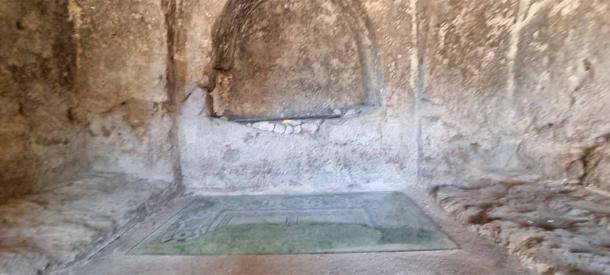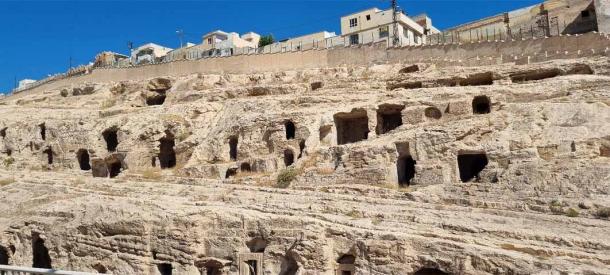
Ancient Edessa: Kizilkoyun Necropolis And The Villa Of The Amazons
The Balıklıgöl basin, located today in the centre of modern Sanliurfa in Turkiye, was once the centre of Edessa, capitol of the Kingdom of Osroene, which declared its independence in 132 BC from the Seleucid Empire, until it fell to the Roman Empire in 244 BC. The area has archaeological significance, incorporating the Sanliurfa Museum, the Yenimahalle Urban Archaeological site, Haleplibahçe Archaeopark, Balıklıgöl with the Pool of Abraham, the Bedüzzaman Cemetery and Urfa Castle towering on the hill. Two noteworthy sites are the Kızılkoyun Necropolis (second to third century AD) and the Villa of the Amazons featuring the Haleplibahçe mosaics (the fifth to sixth century AD).
Broad view of the Kızılkoyun Necropolis in Sanliurfa (Image: Courtesy Micki Pistorius)
The Kızılkoyun Necropolis
The Kızılkoyun Necropolis is carved in limestone bedrock on four terraces of the Tilfindir Hill, east of Haleplibahçe, north of Balıklı Lake. As with most ancient cities, the necropolis was located outside the walls of the city and this one was situated just outside the West gate of Edessa. This gate is mentioned in Syriac literary sources as “ the gate of the vaults (Syriac: kappē) where it is connected with the burial-place created by or for Abšlāmā son of Abgar”. Interestingly, Abgar was King of Osroene in the early first century AD and is remembered as one of the first Christian kings, perhaps even during Jesus's lifetime, after being converted by Thaddeus of Edessa, one of the Seventy Disciples. There is no indication that this Abslama (Absalom?) was the son of the King Abgar.
The hillside was declared a protected area in 2012 and cleared from slums by the Sanliurfa Museum Directorate and Sanliurfa Metropolitan Municipality. To date over a hundred rock cave graves belonging to the second and fourth century AD have been excavated and recently opened to the public as an open-air museum.

Original mosaic floor in one of the tombs (Image: Courtesy Micki Pistorius)
This necropolis culture displays a variety of paganism and Christianity, from the Kingdom of Osroene, Roman paganism and Roman-Byzantine Christianity. Paganism supports the principle that the deceased live on in another world and would require certain objects, today recognized as grave goods. Initially the open grave tombs were supplied with grave goods, but as tomb robbing increased, large stone rolling doors and false tombs were installed. Reliefs, frescoes, mosaics, statues and graffiti on sarcophagi of mythological or religious themes adorn the tombs.
Like this Preview and want to read on? You can! JOIN US THERE ( with easy, instant access ) and see what you’re missing!! All Premium articles are available in full, with immediate access.
For the price of a cup of coffee, you get this and all the other great benefits at Ancient Origins Premium. And - each time you support AO Premium, you support independent thought and writing.
Dr Micki Pistorius has an Honours Degree in Biblical Archaeology
Top Image: Interior of a double chamber tomb with arched entrance and arcosolium on the left (Image: Courtesy Micki Pistorius)
By: Micki Pistorius

















Comments
Not normally a pointer out of blatant errors, but edessa was independent for just about negative 100 years??!! (133 bc to 244 bc??!!)
infinitesimal waveparticles comprise what we call home the earth
manipulatable by thought ability supressed in humans since birth